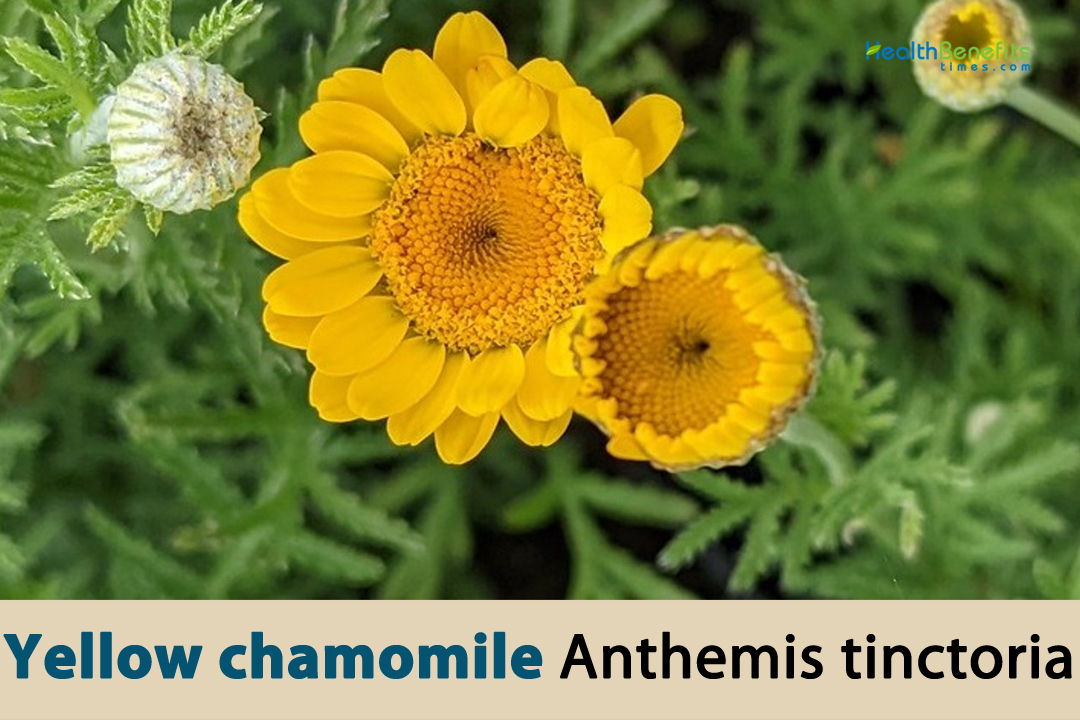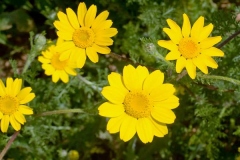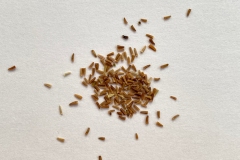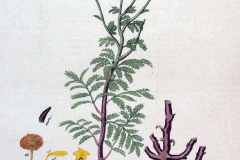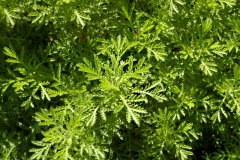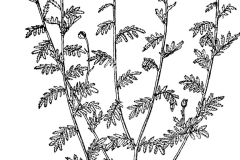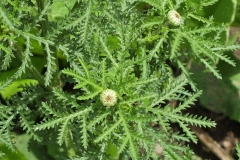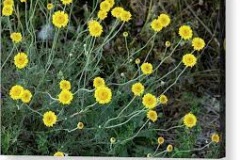| Yellow chamomile Quick Facts | |
|---|---|
| Name: | Yellow chamomile |
| Scientific Name: | Anthemis tinctoria |
| Origin | Europe, the Mediterranean and Western Asia and naturalized in scattered locations in North America |
| Colors | Initially green turning to brown or tan in color |
| Shapes | Small, dry, and one-seeded. They are typically ovoid or oblong in shape, with a length of about 2 to 3 millimeters (0.08 to 0.12 inches). |
| Taste | Mildly sweet and slightly fruity |
| Major nutrients | • Essential Oils • Flavonoids • Terpenoids • Polyphenols • Volatile Compounds • Alkaloids |
| Health benefits | Digestive Aid, Skin Health, Menstrual Pain Relief, Respiratory Health, Gastrointestinal Calm, Mood Enhancement, Pain Management, Wound Healing, Dental Health, Hair Health and Improved Respiratory Function |
| Name | Yellow chamomile |
|---|---|
| Scientific Name | Anthemis tinctoria |
| Native | Europe, the Mediterranean and Western Asia and naturalized in scattered locations in North America |
| Common Names | Corn Chamomile, Mayweed, Stinking Chamomile, Scentless Mayweed, Dog Fennel, Dillweed Chamomile, Wild Chamomile, Field Chamomile, False Chamomile, Baldr’s Brow, Ground Apple, Low Chamomile, Mayweed Chamomile, Hogweed, Mather, Round Chamomile, Wild Chamomile, Wild Chamomile Weed |
| Name in Other Languages | Afrikaans: Geel Kamille Albanian: Kamomili i verdhë, syviç, Syviç ngjyruese Amharic: Bino’mal Vandiyas (ቢኖማል ቫንዲየስ) Arabic: Baboonj Asfar (بابونج أصفر), Albabwnj al’asfar (البابونج الأصفر), Al baboonj al asfar (البابونج الأصفر), babwnaj ‘asfar (بابونَـج أَصفَر), bahar sibaghy (بَهار صِباغي) Armenian: Deghdzin tapur (դեղձին թափուր), Ant’em nerkatu (Անթեմ ներկատու) Assamese: Holud Chamomile (হলুদ চামোমাইল) Azerbaijani: Sarı xamom, Boǰa sığır ҝözü (Боја сығыр ҝөзү) Bengali: Holud Chamomile (হলুদ চামোমাইল) Bosnian: Žuta kamilica Bulgarian: Zhǎlta romashka (Жълта ромашка), Zhǎlta layka (Жълта лайка), Zhŭlto podrumiche (Жълто подрумиче) Chinese: Huáng gān jú (黄甘菊), Chun huang ju Croatian: Žuta kamilica, bojadisarski jarmen Czech: Žlutý Heřmánek, marunek barvířský, rmen barvířský, Rmen barvířský nepravý Danish: Gul kamille, Aften-Pragtstjerne, Almindelig Spergel, Blæresmælde, Mark-Hindeknæ, farve-gåseurt Dutch: Gele Kamille, verf kamille English: Yellow Chamomile, Dyers’ chamomile, Golden marguerite, golden chamomile Estonian: Kollane kummel, kollane karikakar Filipino: Dilaw na Chamomile Finnish: Keltakamomilla, Nurmikohokki, Peltohatikka, Punasolmukki, Valkoailakki, keltasauramo French: Camomille Jaune, Cota des teinturiers, Camomille des tinturiers, anthémis des teinturiers, oeil de boeuf Georgian: Qviteli kamila (ყვითელი კამილა) German: Gelber Kamille, Faerber-Hundskamille, Färber-Hundskamille, Färberhundskamille, echte Färberkamille, Färberhundskamille, Färberkamille Greek: Kítrinos chamomile (Κίτρινος χαμομήλι), Kítrini chamomile (Κίτρινη χαμομήλι) Gujarati: Pīḷo Babūnī (પીળો બબૂની), Pīḷo Kamomail (પીળો કમોમેલ) Hausa: Yellow Chamomile Hebrew: Kamomilya tzahuba (כמומיליה צהובה), Kamomil tzahov (כמומיל צהוב), kachvan hatzabba’im, kkhun htsbeim (קַחְוַן הַצַּבָּעִים ) Hindi: Peelī camomail (पीली चमोमाइल), Peela babuni (पीला बाबूनी) Hungarian: Sárga kamilla, festő pipitér Icelandic: Skurfa, Gult gæsablóm Igbo: Yellow Chamomile Indonesian: Kamomil Kuning Italian: Camomilla Gialla, bambayella, camomilla dei tintori, camomilla pei tintori, occhio di bue Japanese: Lerōkamomīru (イエローカモミール) Kannada: Haḷadi kamamil (ಹಳದಿ ಕಮಮಿಲ್) Kazakh: Sarı qamışqa (Сары камышка) Korean: Hwang-geum kamoma-il (황금 카모마일), Noran kamoma-il (노란 카모마일) Kyrgyz: Jaryq qamışqa (Жарык камышка) Latvian: Dzeltens kumelīte, dzeltenā ilzīte Lithuanian: Geltonoji ramunė, Geltonasis ramunėlis, geltonasis bobramunis, gul gåseblom Macedonian: Zholta kamilitsa (Жолта камилица) Majorcan: Ull de bou Malay: Chamomile Kuning, Kamil kuning Malayalam: Mañña kāmamail (മഞ്ഞ കാമമൈൽ) Marathi: Pivaḷā Babūnī (पिवळा बबूनी), Pivaḷā Kamomail (पिवळा कमोमाइल) Moldovian: Romanicé subtinktorie (Романицэ субтинкторие) Mongolian: Shar suma (Шар сума) Nepali: Pahelo Chamomail (पहेलो चामोमाइल) Norwegian: Gul kamille, Engsmelle, Kvit jonsokblom, Linbendel, Tunbendel, Gul gåseblom Odia: Haladi Chamomile (ହଳଦି ଚାମୋମାଇଲ) Pashto: Zarghuno Babuna (زرغونو بابونه) Persian: Babuneh zard (بابونه زرد), Kahook shanbaleela (کاهوک شنبلیله) Polish: Rumianek Żółty, rumian barwierski, rumian źólty Portuguese: Camomila Amarela, camomila-dos-tintureiros, macela-dos-tintureiros, malmequer-dos-tintureiros, bemmequeres amarello, macella dos tintureiros, marcella dos tintureiros Punjabi: Pila Babuni (ਪੀਲਾ ਬਬੂਨੀ), Pila Chamomile (ਪੀਲਾ ਚਮੋਮਾਈਲ) Romanian: Mușețel galben, musetel de aur, musetel galben, romaniţă galbenă, romaniță subtinctorie Russian: Zhyoltaya romashka (Желтая ромашка), Antemis (Антeмис), Pupavka krasil’naia (Пупавка красильная), artemis krasil’nyy (антемис красильный), pupavka zheltotsvetnaya (пупавка желтоцветная), pupavka krasil’naya (пупавка красильная) Sanskrit: Haritapushpa Serbian: Žuta kamilica (Жута камилица), žuta rada (жута рада) Sinhala: Kaha kurun (කහ කුරුන්) Slovak: Žltý harmanček, rumanovec farbiarsky, Rrumanovec farbiarsky Slovenian: Rumena kamilica, barvilna pasja kamilica, Volovjak Somali: Cambeelo Cas Spanish: Manzanilla Amarilla, Manzanilla de tintes Swahili: Chamomile Njano, Chamomile ya Manjano Swedish: Gul Kamomill, Rödnarv, Smällglim, Vitblära, Åkerspärgel, Färgkulla Tajik: Shumbolaki surkh (Шумболаки сурх) Tamil: Mañcaḷ cāmandi (மஞ்சள் சாமந்தி), Mañcaḷ Kamomail (மஞ்சள் கமோமைல்) Telugu: Pasupu Camanti (పసుపు చామంతి), Pasupu Kamomail (పసుపు కమోమైల్) Thai: Dok kāmomāy ls̄i h̄elụ̄xng (ดอกคาโมมายล์สีเหลือง), Dx̀k k̂ā memāy (ดอกคาเมมาย) Turkish: Sarı Papatya Turkmen: Sary goşunç Uighur: Säri qamomiyil (سەرى كامومىيل) Ukrainian: Zhovta romashka (Жовта ромашка), roman zefirova (роман зефірова), roman markhot·sʹkyy (роман мархотський), roman napivfarbuvalʹnyy (роман напівфарбувальний) Urdu: Pila babuni (پیلا بابونی), Pila Kamomail (پیلا کمومیل), Zard Chamomile (زرد چمومائیل) Uzbek: Oqqumoncha Vietnamese: Cúc hoàng đàn màu vàng, Cúc Vàng Welsh: Camri Melyn Yoruba: Oloorun Chamomile Zulu: Ikhomemile elikhulu, iChamomile ebhuhlaza |
| Plant Growth Habit | Erect, clump-forming, shrubby perennial |
| Growing Climates | Sunny slopes, rocks, railway tracks and walls, usually on limestone |
| Soil | Well-draining soil is essential. Yellow chamomile prefers moderately fertile, sandy or loamy soil. Ensure good drainage to prevent root rot |
| Plant Size | About 1 to 2 feet (30 to 60 centimeters) and spreads to a similar width |
| Root | Taproot is longer and deeper than the lateral roots. It helps the plant stay in place in the ground. Lateral roots spread out from the taproot. |
| Stem | Non-woody and green, with a soft texture about 1 to 3 feet (30 to 90 centimeters) |
| Bark | Very thin that protect against damage, bacteria, and losing too much water |
| Leaf | Leaves are typically pinnately dissected, meaning they are deeply lobed and have a fern-like or feathery appearance. Each leaf may have multiple lobes or leaflets. Margins (edges) of the leaves can be serrated or toothed, with small, pointed teeth or lobes along the edges |
| Flowering season | May to June till July |
| Flower | Solitary flower heads at the tips of its stems. These flower heads are daisy-like in appearance and can grow on long stalks. Flowers are relatively small, with ray flowers measuring about 1 to 2 centimeters (0.4 to 0.8 inches) in length. The disk flowers are even smaller, measuring only a few millimeters in length. The overall shape of the flower head is flat and disc-shaped. |
| Fruit Shape & Size | Small, dry, and one-seeded. They are typically ovoid or oblong in shape, with a length of about 2 to 3 millimeters (0.08 to 0.12 inches) |
| Fruit Color | Initially green turning to brown or tan in color |
| Seed | Relatively small, with dimensions of approximately 2 to 3 millimeters (about 0.08 to 0.12 inches) in length |
| Flavor/Aroma | Sweet and slightly fruity with hints of apple or pineapple |
| Taste | Mildly sweet and slightly fruity |
| Plant Parts Used | Flower, leaves, essential oil |
| Propagation | By seeds, Division, Stem cutting |
| Lifespan | About 2 to 3 years |
| Season | August to September |
| Major Nutrition |
|
| Available Forms |
|
| Health benefits |
|
Plant Description
The yellow chamomile plant stands straight up, forms clumps, and is a shrubby perennial that gets to be about 1 to 2 feet (30 to 60 centimetres) tall and wide. The plant grows on sunny hills, rocks, walls, and railroad tracks, most often on limestone. Soil that drains well is very important. Yellow chamomile grows best in sandy or loamy soil that isn’t too rich in nutrients. To stop root rot, make sure the soil drains well. The main reason it is grown is for its beauty. You can put it in gardens and landscapes, like cottage-style gardens, wildflower fields, or as a border plant, because of its bright yellow flowers. The flowers of the Golden Marguerite plant are also used to make wreaths and flower arrangements. It can be used as a companion plant in parks. The fragrant leaves can help keep some pests away and the plant will look nice too.
History
Anthemis tinctoria is native to Eurasia, from Siberia to Iran and the surrounding areas. It has become common outside of this range, though. This type of annual flowering plant in the daisy family (asteraceae, formerly known as the compositae) does very well in hot, dry summers. If our climate keeps getting warmer, it might even be possible to grow it commercially!
It can’t be used in cooking or business and it can only be used in small amounts for medical reasons. However, it makes great yellow, buff, and golden-orange dyes that were once used for fabrics. Because it was used to make dyes, it now lives in the wild in France, all the way east to Turkey, and further south, all the way to the Iberian Peninsula.
Appropriate growing environment for Yellow chamomile
Yellow chamomile thrives in specific growing conditions. Here’s the appropriate environment for cultivating this lovely herbaceous perennial:
- Sunlight: Yellow chamomile grows best in full sun, which means it needs at least 6 to 8 hours of direct sunshine every day. It can grow in some shade, but it might not bloom as much.
- Soil: Soil that drains well is very important. Yellow chamomile grows best in sandy or loamy soil that isn’t too rich in nutrients. To stop root rot, make sure the soil drains well. If your soil is heavy or packed down, you might want to add organic matter like compost to help it drain better.
- Moisture: Once this plant is established, it can handle drought, but it does better when it’s watered regularly, especially during dry times. But don’t water too much, because roots can rot in wet dirt.
- PH Level: The pH range for yellow chamomile is between 6.0 and 7.0. It grows best in slightly acidic to neutral soil.
- Temperature: It can grow in USDA zones 3–9, which means it can handle a wide range of weather. On the other hand, it does best in conditions that aren’t too hot or too cold.
- Spacing: When you put the yellow chamomile, leave about 12 to 18 inches between each plant so that it can grow and not get too crowded.
- Mulching: Putting mulch around the base of the plant helps keep the soil at a more stable temperature, keep water in the soil, and keep weeds from growing.
- Pruning: Regularly cutting off the dead flowers will help the plant bloom all season long. In late summer, you can also cut back the plant to get a second round of blooms.
- Fertilization: Yellow chamomile usually doesn’t need a lot of fertilizer. In the spring, a balanced, slow-release fertilizer can give plants all the nutrients they need for the season.
- Pests and Disease: Pests and diseases don’t bother this plant too much. But watch out for slugs, snails, and bugs. If necessary, use the right ways to get rid of the pests.
Roots
As yellow chamomile grows older, it usually gets a center taproot. The main root of the plant goes straight down into the ground and holds the plant in place. The taproot is longer and deeper than the lateral roots. It helps the plant stay in place in the ground. Lateral roots spread out from the taproot. These are smaller roots that spread out in different directions and grow horizontally. Lateral roots are very important for getting water and nutrients from the dirt around the plant. Root hairs are tiny structures that look like hairs and cover the roots at the microscopic level. These root hairs make the roots’ surface area much bigger, which makes it easier for them to take in water and minerals from the dirt. There is a taproot system in yellow chamomile, but as the plant grows older, it also forms a network of flexible roots. Fibrous roots are thin, have a lot of branches, and go out into the soil horizontally. They help the earth hold its shape and take in nutrients.
Stem
Yellow chamomile generally gets a center taproot as it ages. The plant’s main root goes all the way down to the ground and holds it there. It goes deeper and is longer than the side roots. It helps the plant stay in the ground. The taproot has lateral roots that grow out from it. These are smaller roots that grow across the ground and spread out in different directions. The dirt around the plant needs water and food, and the lateral roots are a big part of that. Little things called root hairs cover the roots at the microscopic level. They look like hairs. The root hairs make the roots’ surface area bigger. This helps the roots take in more water and chemicals from the soil. Yellow chamomile has a taproot system, but as it gets older, it also grows a network of bendable roots. Fibrous roots are very thin, have many branches, and stick out flat in the ground. They keep the ground’s shape and help it take in food.
Bark
The yellow chamomile stem’s skin is the top layer. This layer is made up of special cells that protect against damage, bacteria, and losing too much water. The skin is usually very thin, and in many herbaceous plants, like yellow chamomile, it doesn’t get the same kind of protective covering that woody plants do. As you go down the skin, you’ll find a layer called the brain. The brain is made up of different kinds of cells that do things like store things, support the structure, and move water and nutrients around the body. Because it comes from a grass plant, it is pretty soft and bendable.
Lint and cork are often found in the bark of woody plants, but yellow chamomile branches don’t have them. Woody plants have cork cells that protect them and keep water out, and lenticels that let gases move through them. Since yellow chamomile is a plant and doesn’t have these parts, its stem surface is different. There may be a slightly rough surface on the stem because it has trichomes and skin cells on it. The rough bark of woody plants, on the other hand, has a very different feel.
Leaves
Along the stem of chamomile, the yellow leaves are grouped in pairs. This means that as you move up the stem, each leaf is connected at a different level, going from side to side. The leaves are usually pinnately divided, which means they have deep lobes and look like ferns or feathers. There may be more than one lobe or leaflet on each leaf. The tips of the leaves may have small, pointed teeth or lobes along them, which are also called serrations or teeth. Trichomes, which are fine, soft hairs, cover most leaves. The leaves may look a little fuzzy or wrinkled because of these hairs. The leaves are usually green, but they can be light green or dark green. The green color comes from chlorophyll, which is the pigment that makes photosynthesis possible.
There are many veins in the leaves that carry water and food all over the leaf. The veins are more noticeable on the back of the leaf and help hold it together. Nodes, which are where the leaves meet the stem, are where they hang on. They are connected by a small stem called a petiole. This keeps the leaves away from the stem so they can get as much sunlight as possible. The size can change, but most of the time they are small to moderately sized, with leaflets that are 2 to 5 centimetres (0.8 to 2 inches) long. Photosynthesis, the process by which plants turn sunshine, carbon dioxide, and water into sugars and oxygen, is what the leaves do for the plant. The loss of water vapor through stomata is also a part of transpiration, and the leaves are important to the plant’s health and growth as a whole.
Flowers
At the very ends of its stems, yellow chamomile grows single flower heads. The flower heads of these plants look like daisies and can grow on long stalks. In reality, each flower head is made up of many separate flowers arranged in a disc in the middle and ray flowers all around it. Chamomile is in the Asteraceae family, which has a lot of plants with this type of shape. Ray flowers that look like petals are on the outside of the flower head. Most of the time, these ray flowers are bright yellow and have a strap-like shape with notched tips. In turn, they surround the center disc and give the flower head its daisy-like shape. The center disc is inside the circle of ray flowers. The disc is made up of many small, tube-shaped flowers that are usually yellow or yellow-orange. This type of flower has five petals that are joined together to make a tube. They have reproductive systems for both males and females.
Most yellow chamomile flowers are pretty small. The ray flowers are only a few centimetres (0.4 to 0.8 inches) long. Even smaller are the disc flowers, which are only a few millimeters long. In general, the flower head is flat and disc-shaped. As you might guess from the name, ray flowers are usually very bright yellow. Also, the disc flowers are yellow or orange-yellow. This species’ bright coloring is one of its most important traits. Flower scents are soft and nice, and some people say they smell like apple or pineapple. Usually, it blooms from late spring to early summer, but sometimes it keeps flowering all through the growing season.
Fruits
The fruit is known as an achene. An achene is a simple, dry fruit that doesn’t split open to get its seed out. For the most part, it only has one seed inside a hard, woody or papery shell. Yellow chamomile has small, dry fruits with only one seed. They are usually round or oval, and about 2 to 3 millimeters (0.08 to 0.12 inches) long. Each fruit is very small and doesn’t stand out. The flowers of yellow chamomile are usually brown or tan when they are fully grown. They might look like paper and have a few wrinkles. Aches from yellow chamomile are mostly spread by wind. The achene becomes lighter as the fruit dries out and matures, which helps the wind carry it. The achenes are blown away from the parent plant by the wind, which helps the seeds of the plant grow in new places.
Seeds
The seeds of yellow chamomile are called “achenes.” Achenes are a simple type of dry fruit that usually have one seed inside a hard shell. These seeds are pretty small. They are about 2 to 3 millimeters long, which are 0.08 to 0.12 inches. They are very small, very light, and hard to see. Seeds that are fully grown are usually brown or tan. The color may be a little different based on things like how mature it is and the weather. Most seeds are long and thin, like a leaf. They look a little flatter than usual. The testa, which is another name for the seed coat, is tough and hard. The seed coat keeps the seed safe from germs, the environment, and damage while it’s being spread.
Health benefits of Yellow chamomile
Yellow chamomile is a flowering plant that has been utilized for its potential health benefits for many years. While it shares some characteristics with its more commonly known relative, German chamomile, yellow chamomile offers its own unique set of health advantages:
1. Anti-Inflammatory Properties
Flavonoids and terpenoids are some of the chemicals in yellow chamomile that have anti-inflammatory effects. These chemicals may help lower inflammation in the body, which could help with arthritis, joint pain, and inflammatory skin diseases like psoriasis and eczema.
2. Digestive Aid
Yellow chamomile has been used to help digestion for a very long time. Inflamed intestines can feel better, bloating goes down, and gas goes away with this herb. Yellow chamomile tea may help your stomach if you drink it before or after a meal.
3. Relaxation and Stress Reduction
Like other chamomiles, yellow chamomile has bioactive chemicals like apigenin that make you feel calm. Drinking yellow chamomile tea might help you feel less stressed, anxious, and antsy. It can also help you sleep better, which makes it a natural way to treat sleeplessness.
4. Skin Health
In many skin care items, extracts from yellow chamomile are used. Because it is anti-inflammatory and an antioxidant, yellow chamomile can help soothe skin irritations, reduce redness, and improve skin health in general. If you have eczema or sunburn, it might help.
5. Menstrual Pain Relief
Some women find that drinking yellow chamomile tea helps with their monthly cramps and pain. The plant may help ease uterine contractions and menstrual pain and soreness because it relaxes muscles.
6. Antioxidant Properties
Antioxidants, which are found in yellow chamomile, protect the body from reactive stress and free radical damage. Regular use may be good for your health in the long run and may even lower your risk of getting long-term diseases like cancer and heart disease.
7. Immune Support
Yellow chamomile may help boost the immune system by containing chemicals that fight free radicals and inflammation. This makes the body less likely to get sick or infected.
8. Respiratory Health
If you have trouble breathing, breathing in the steam from a cup of yellow chamomile tea can help. Because it reduces inflammation and calms you down, it may help with stuffy noses, asthma, or allergies.
9. Anti-Bacterial Properties
Yellow chamomile can help stop the growth of some bacteria because it has mild antibacterial qualities. When added to mouthwashes or gargles, this trait can help fight minor infections and keep your mouth healthy.
10. Gastrointestinal Calm
People with irritable bowel syndrome (IBS) often use yellow chamomile to ease their symptoms, such as stomach pain and diarrhea. It may help ease stomach pain because it reduces inflammation and relaxes muscles.
11. Anti-Anxiety and Mood Enhancement
The calming effects of yellow chamomile also reach the mind. If you drink yellow chamomile tea, it can help you feel less anxious and more relaxed. The compound apigenin may be to blame for this calming effect; it works with brain receptors that help control anxiety.
12. Pain Management
Because it reduces inflammation and relaxes muscles, yellow chamomile can help with pain control. It might help with cramps, muscle pain, and other kinds of pain. Putting a bandage with chamomile on the hurt area can help with pain in that area.
13. Wound Healing
Because it reduces swelling and kills germs, yellow chamomile can help heal wounds. Putting creams or ointments with chamomile in them may help small cuts, scrapes, or burns heal faster and lower the risk of getting an infection.
14. Allergy Symptom Relief
Some people who have allergies feel better after drinking yellow chamomile tea. It may help lessen allergic responses and ease symptoms like sneezing, runny nose, and itchy eyes because it reduces inflammation.
15. Dental Health
The mild antibacterial qualities of yellow chamomile can help keep your teeth healthy. Mouthwash with chamomile in it may help fight bad breath, ease gum inflammation, and improve general oral health.
16. Gastric Ulcer Support
Yellow chamomile might help people who have stomach ulcers. It can help protect the lining of the gut, reduce swelling, and ease the pain that comes with ulcers because it is anti-inflammatory and soothing.
17. Hair Health
Yellow chamomile is used in some hair care items because it may be good for the hair and scalp. Shampoos and conditioners with chamomile in them can help calm an itchy scalp and make hair shine.
18. Improved Respiratory Function
It can be easier to breathe when you breathe in the steam from yellow chamomile tea. People who have asthma or pneumonia may find this especially helpful.
Culinary Uses of Yellow chamomile
Yellow chamomile can be utilized in culinary applications to add unique flavors and aromas to various dishes. Here are some culinary uses of yellow chamomile
- Herbal Tea: Taking in the steam from yellow chamomile tea can help you breathe better. This might be very helpful for people with asthma or pneumonia.
- Infused Syrups and Honey: You can add the gentle flavor of yellow chamomile to syrups and honey. In a jar of honey or sugar syrup, put dried chamomile leaves. Then, leave it alone for a few weeks. You can add the infused syrup or honey to drinks, sweets, or yogurt and fruit to make them sweeter.
- Salad Garnish: Fresh yellow chamomile flowers look nice on salads and can also be eaten. They give your greens a pop of color and a light flower note.
- Herb-Infused Vinegar: You can add flavor to vinegars by putting dried yellow chamomile flowers in a bottle of apple cider vinegar or white wine vinegar. Let it steep for a few weeks, and then strain the flowers out. You can add chamomile to vinegar to make salad sauces or marinades for a unique taste.
- Flavoring for Baking: When you bake, add dried chamomile flowers to the mix. They can give cookies, cakes, and muffins a light flower flavor. Before you add the dried flowers to the baking mix, make sure to grind them into a fine powder.
- Herbal Butter: Dried or finely chopped yellow chamomile flowers can be mixed into melted butter to make chamomile-infused butter. This can be used to make veggies, bread, or scones taste better.
- Cocktail Garnish: Use fresh yellow chamomile flowers as a garnish on drinks to make them look fancier. They can float on top of drinks or be mixed in with other herbs and spices to give them a new taste.
- Jellies and Preserves: You can add the mild flower flavor of yellow chamomile to jams, jellies, or fruit preserves. Fruits like apricots, peaches, and pears go well with it.
- Soup Seasoning: In some types of food, like Eastern European and Mediterranean foods, yellow chamomile is used to season soups. To broths and vegetable-based soups, it can add a light herbal note.
- Floral Ice Cubes: You can make ice cubes with yellow chamomile flowers to make cold drinks look nice. You can use these ice cubes that have chamomile in them in iced tea, lemonade, or drinks.
- Floral Ice Cream or Sorbet: Add dried yellow chamomile flowers to cream or simple syrup and let them steep. Then, use the mixture as a base for making your own ice cream or sorbet. The flowery notes can make your frozen desserts taste even better.
- Chamomile-Infused Oil: Soak dried chamomile leaves in a neutral oil, like olive oil or grape seed oil, for a while to make chamomile oil. For a hint of flowery flavor, drizzle this fragrant oil over salads or roasted veggies.
- Chamomile Rice Pilaf: The delicate flavor of yellow chamomile can be added to cooked rice by adding a few dried flowers to it while it cooks. This is a tasty side food that goes well with many meals.
- Chamomile-Flavored Sweets: Add chamomile to the sweets you make at home, like caramels and truffles. The light flower notes can go well with the sweet treats.
- Chamomile-Infused Vodka or Gin: By adding dried yellow chamomile flowers to vodka or gin, you can make unique drinks with flowers in them. After a few days, strain out the flowers. For a subtle floral twist, add the spirit that has been infused to drinks.
- Chamomile-Flavored Syrups for Desserts: To make chamomile syrups, boil sugar, water, and dried chamomile flowers together. You can drizzle these syrups on pancakes, waffles, ice cream, or other sweets to make them taste better.
- Chamomile-Enhanced Rice Pudding: During the cooking process, add dried chamomile flowers to rice pudding to give the dessert a light floral flavor and smell.
- Chamomile-Infused Butter for Seafood: Serve seafood foods like grilled fish or shrimp with butter that has chamomile in it to make them taste better. The light flower notes can go well with the naturally sweet seafood.
- Chamomile-Flavored Whipped Cream: To add chamomile flavor to whipped cream, soak dried flowers in warm cream for a while before beating it. Place this sweet whipped cream on top of treats like pies or fruit tarts.
- Chamomile-Infused Dressings: You can make your own salad sauces by adding vinegar, lemon juice, herbs, and dried chamomile flowers to olive oil. This can make your meals taste better.
Different uses of Yellow chamomile
Yellow chamomile offers a variety of uses beyond its potential health and culinary benefits. Here are different uses of yellow chamomile:
- Ornamental Plant: A lot of the time, yellow chamomile is grown in parks and landscapes just for looks. It looks nice in flower beds and hedges because it has bright yellow flowers that look like daisies and leaves that look like ferns.
- Cut Flowers: Freshly cut yellow chamomile flowers can be added to bouquets to give them a splash of color and a unique, daisy-like look.
- Natural Dye: Yellow chamomile has been used as a natural dye for clothes in the past. When used to make dyes, the flowers can make shades of yellow and green.
- Companion Plant: In farming, yellow chamomile is sometimes used with other plants to keep some pests away and bring in good bugs like pollinators. Its fragrant leaves can help keep pests away from crops nearby.
- Potpourri and Sachets: Yellow chamomile flowers that have been dried out can be mixed with other flowers or put in bags to give closets, drawers, or rooms a nice, mild scent.
- Aromatherapy: Essential oil of yellow chamomile, which is made from the leaves, is used in aromatherapy to calm and soothe. Spread it around or mix it with massage oils to help you relax.
- Herbal Smoking Blends: Dried yellow chamomile flowers are used in some traditional and herbal smoking mixes because they have a mild flavor and might help calm you down. But because it’s bad for your health, smoking anything should be done with care.
- Insect Repellent: If you mix yellow chamomile essential oil with carrier oil and put it on your skin, it can naturally keep bugs away.
- Flavoring in Liqueurs: In the past, yellow chamomile flowers have been used to add a mild floral note to some liqueurs.
- Crafts and Decorations: You can make crafts with yellow chamomile flowers and leaves, like pressed flower art, wreaths, and other home decor projects.
- Soaps and Bath Products: Because it smells nice and calms down, yellow chamomile essential oil is sometimes used to make soaps, bath oils, and bath salts.
- Herbal Remedies and Infusions: In addition to tea, yellow chamomile can be used to make plant remedies for a wide range of health problems, such as tinctures, poultices, and herbal infusions.
- Landscaping and Erosion Control: Yellow chamomile can be used in gardening to help keep the soil from washing away on slopes or in places where the soil isn’t stable because it grows in a spreading way.
- Educational Purposes: Because it looks different from other plants, yellow chamomile is often used in schools to teach botany and plant recognition.
- Wildlife Habitat: Pollinators like bees and butterflies can be drawn to the flowers of yellow chamomile, which is good for the biodiversity of a yard or natural area.
Side effects of Yellow chamomile
While yellow chamomile is generally considered safe for most people when used in moderation, there are potential side effects and precautions to be aware of:
- Allergic Reactions: Some people may be more likely to have an allergic response to yellow chamomile if they are allergic to plants in the Asteraceae family. This includes ragweed, marigolds, and other daisy-like plants. Allergic reactions can be as mild as a rash on the skin or as serious as hives, itching, or trouble breathing. If you know that you are allergic to these plants, you should be very careful when using or eating yellow chamomile goods.
- Skin Sensitivity: Putting chamomile items on your skin can sometimes make it more sensitive or give you contact dermatitis, especially if you already have sensitive skin. Before using skincare items with chamomile in them, it’s best to do a patch test on a small area of skin.
- Gastrointestinal Upset: Some people may have mild stomach problems like sickness or upset stomach when they drink chamomile tea or take supplements. People who are sensitive to herbal remedies are more likely to experience these affects.
- Drowsiness and Sedation: Chamomile, especially yellow chamomile, is known to help people relax and calm down. This can help you sleep and relax, but too much of it can make you sleepy or less alert. If you have taken a lot of chamomile, you shouldn’t drive a big vehicle or do anything else that needs your full attention.
- Interactions with Medications: Some medicines, like blood thinners (anticoagulants) and drugs that affect the central nervous system, might not work well with chamomile. It might make these medicines work better, which could increase the risk of bleeding or make you sleepier. Before using chamomile products regularly, talk to a doctor or nurse if you are on any medicines.
- Pregnancy and Breastfeeding: Most of the time, drinking chamomile tea once in a while is safe while pregnant or nursing. However, you should talk to your doctor before drinking it often or in large amounts. There isn’t a lot of study on how safe chamomile is for women who are pregnant or breastfeeding.
- Hormonal Effects: Based on research done on animals, some compounds in chamomile may have hormonal effects that could change estrogen levels. But we don’t fully understand what these results mean for people; more study is needed in this area.
- Digestive Discomfort: Animal studies show that some compounds in chamomile may have hormonal affects that could change the amount of estrogen in the body. There is still more work to be done in this area so we can fully understand what these results mean for people.
References:
http://www.theplantlist.org/tpl/record/gcc-131615
https://www.itis.gov/servlet/SingleRpt/SingleRpt?search_topic=TSN&search_value=511483#null
https://pfaf.org/User/Plant.aspx?LatinName=Anthemis+tinctoria
https://www.cabidigitallibrary.org/doi/10.1079/cabicompendium.112298
https://gd.eppo.int/taxon/ANTTI
https://en.wikipedia.org/wiki/Cota_tinctoria
https://plants.usda.gov/home/plantProfile?symbol=ANTI
http://www.flowersofindia.net/catalog/slides/Yellow%20Chamomile.html
http://www.naturalmedicinalherbs.net/herbs/a/anthemis-tinctoria=yellow-camomile.php


